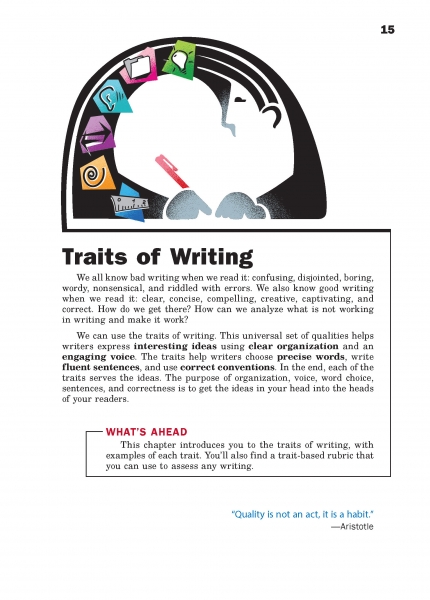Page 015 from

Start-Up Activity
On the board, display two examples of writing, one bad and one good. (If possible, find examples that have the same topic.) Read through the bad example and ask students why it is bad. List their responses. Read through the good example and lead a discussion about the qualities that make it work.
Point out to students that good writing communicates interesting ideas clearly to the reader. Bad writing fails to communicate interesting ideas due to any number of problems.
Let students know that this chapter focuses on the traits of effective writing: ideas, organization, voice, word choice, sentences, and conventions. Students will be able to target different traits at different steps in the process in order to improve all of their writing.
Think About It
"Quality is never an accident. It is always the result of intelligent effort."
—John Ruskin

Start-Up Activity
On the board, display two examples of writing, one bad and one good. (If possible, find examples that have the same topic.) Read through the bad example and ask students why it is bad. List their responses. Read through the good example and lead a discussion about the qualities that make it work.
Point out to students that good writing communicates interesting ideas clearly to the reader. Bad writing fails to communicate interesting ideas due to any number of problems.
Let students know that this chapter focuses on the traits of effective writing: ideas, organization, voice, word choice, sentences, and conventions. Students will be able to target different traits at different steps in the process in order to improve all of their writing.
Think About It
"Quality is never an accident. It is always the result of intelligent effort."
—John Ruskin